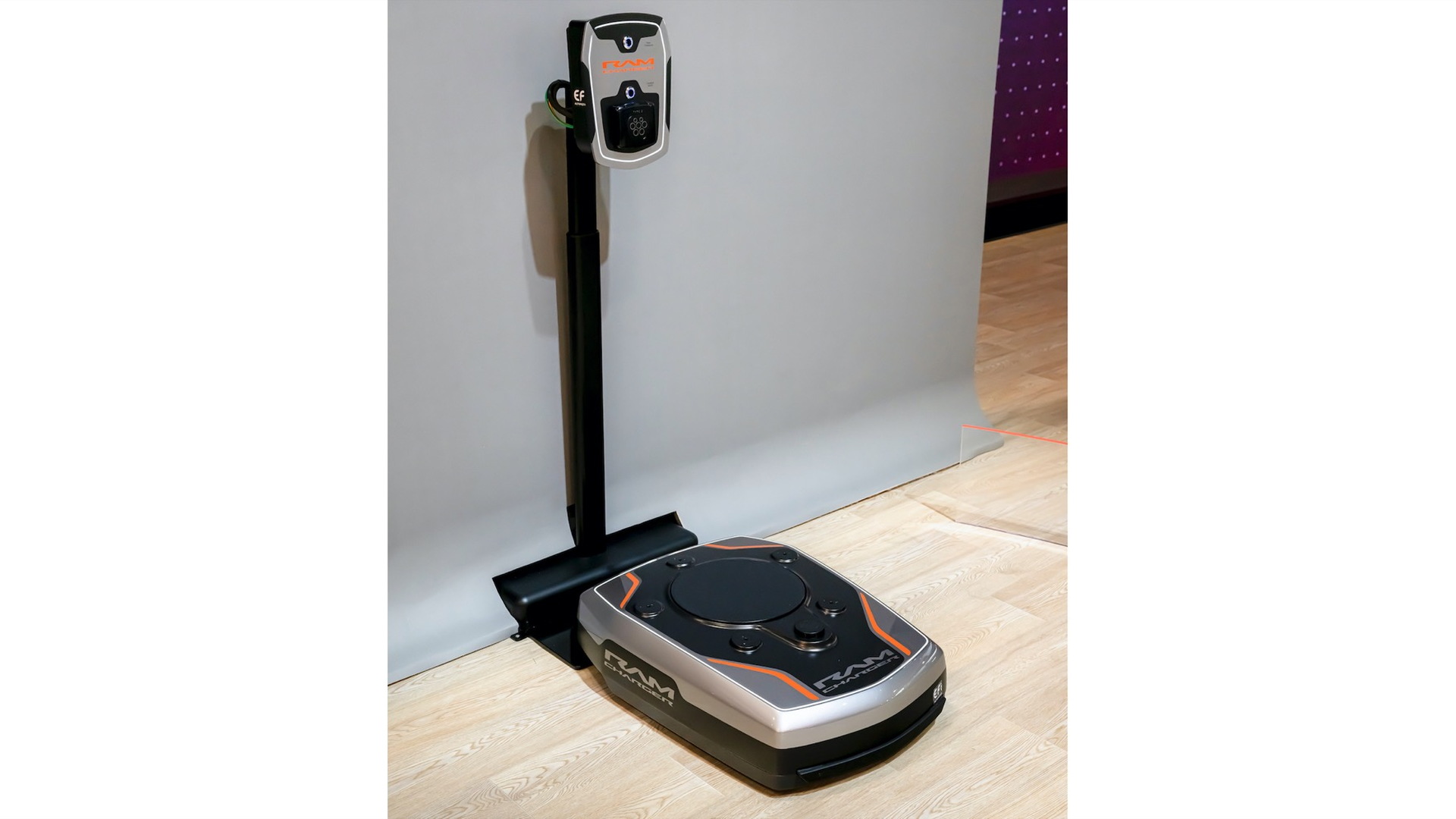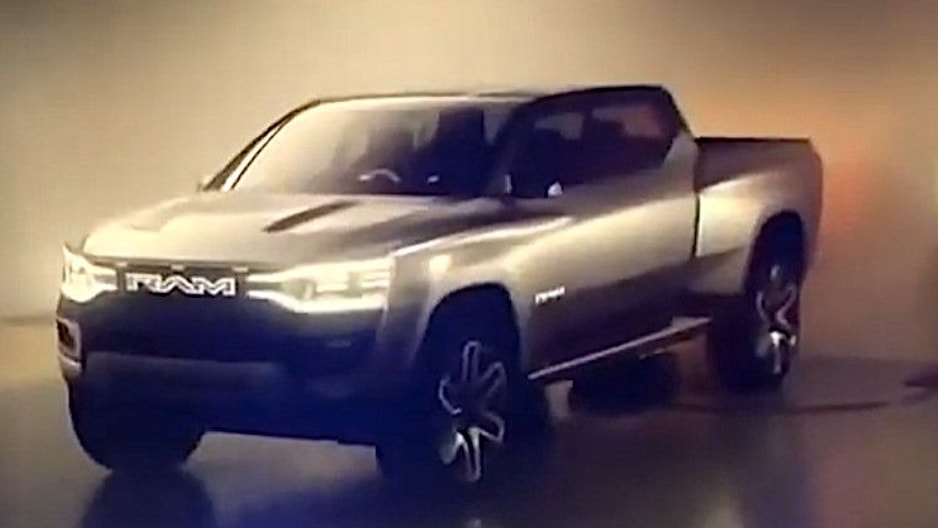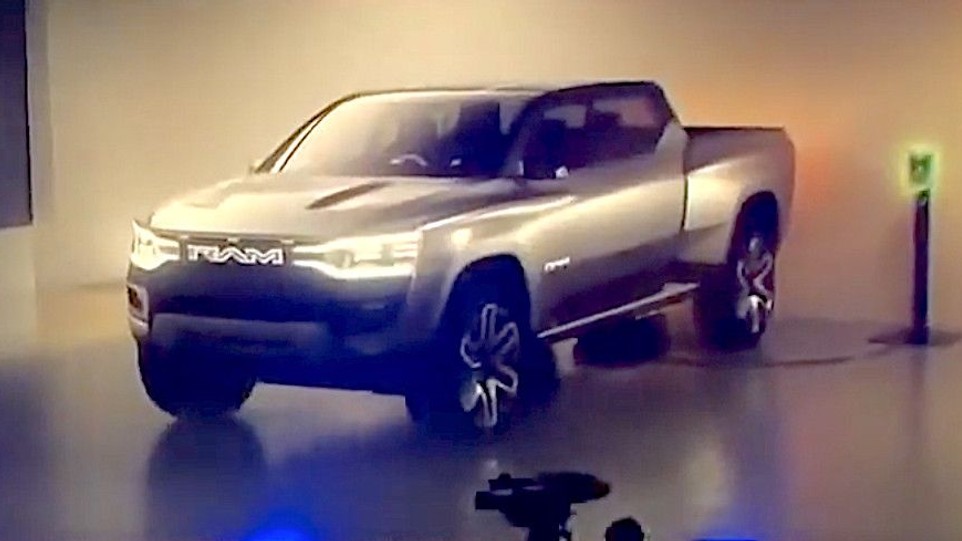The first widely available factory original wireless charger in the U.S. might arrive not from Tesla or one of the Chinese EV makers, but from Stellantis.
As it revealed its Ram electric truck concept last week, Ram gave a future inductive charging robot center stage.
“We know from our Real Talk tour that our customers aren’t just concerned for how long a charge will last on the road, but also how easy it is to charge,” said Ram CEO Mike Koval. “And with our upcoming new inductive robot charger, or Ram Charger, that will make home charging as easy as possible.”
Koval confirmed to Green Car Reports that the charging robot is a production-bound feature, although it's still at the development stage.
As of now, Stellantis doesn’t have a single EV for the U.S., so the inductive charging robot is a pleasant surprise as a technology leap.
The robot, developed by EFI Automotive, intelligently detects the vehicle’s charging needs, moves into place for the charge wherever it might be in the garage, and will choose off-peak times to charge when possible.
Wireless might be a potentially confusing word to use in this case, as while the inductive charger does charge wirelessly, it’s connected to a wallbox base station via a cable. As the video below shows, the robot charger leaves the cable as a trail of its path to the ideal spot under the vehicle, likely reversing its path after the charge to keep the cable under control.
The system has been developed over the past five years, according to EFI, with intelligence from robotics subsidiary Akeoplus. It uses AI to move autonomously to the vehicle position, avoiding obstacles along the way, and stops if movement is detected. EFI says that several vehicles can be charged by the robot, as it has a (cable-limited) range of up to 32.8 feet.
The robot is set up in a way so as to completely eliminate cable handling for the owner, and the charger is suitable for light and commercial vehicles, and in home or business applications.
There's no physical connection carrying the current from charger to vehicle. In inductive wireless charging, a current is induced on a coil of copper wire, creating an oscillating magnetic field, which is then captured by another copper coil and converted back to energy.
One key aspect of this application is that once the robot is in place, it lifts the disc-shaped inductive pad upward to essentially make contact with the receiver pad. The company claims that the inductive charging tech in the robot achieves a 97% efficiency, better than inductive charging systems that maintain an air gap.
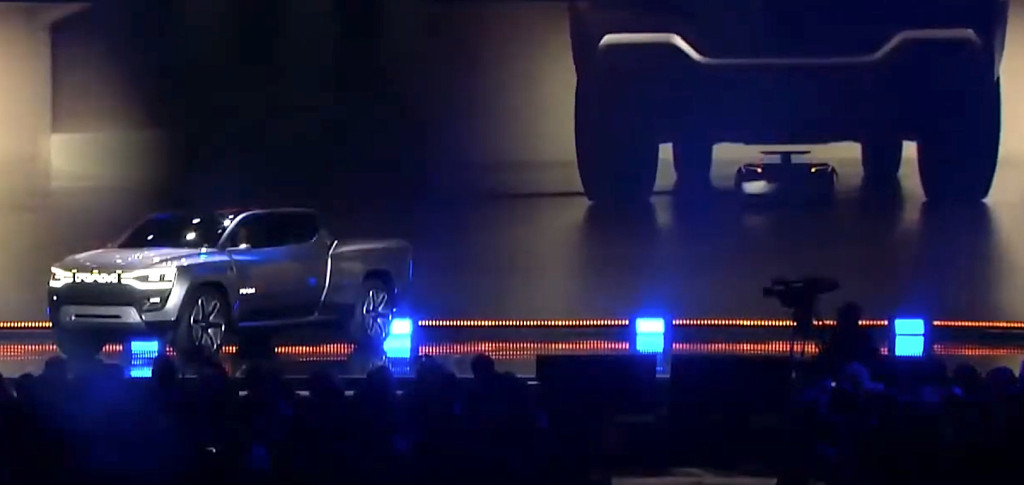
Ram Revolution EV concept with inductive charger
EFI also claims that with the inductive charger it can improve vehicle battery life by 15%, although it didn’t state whether that was related to the charging power, charging habits, or some combination of the two.
As of now, the robot is developed for 7 kw of charging power, and in literature distributed for CES, the company said it sees a production start in 2025—the same year a range-extended Ram is expected, based on hints that it might follow the fully electric Ram by about a year.

Robotic inductive Ram Charger for future Ram EV
The charging robot solves one of the issues with inductive charging, especially at home, which is that once the charging pad is placed, the vehicle needs to be parked in a way that’s perfectly aligned (give or take a few inches) with the pad. If bicycles or anything else in the garage are in the way and the vehicle has to park in a different position, it can’t take advantage of that charging.
Wireless charging technology could be a game-changer for electric vehicles, making them more livable on a daily basis and increasing the likelihood that owners of plug-in hybrids (or range-extended EVs) will actually plug in.
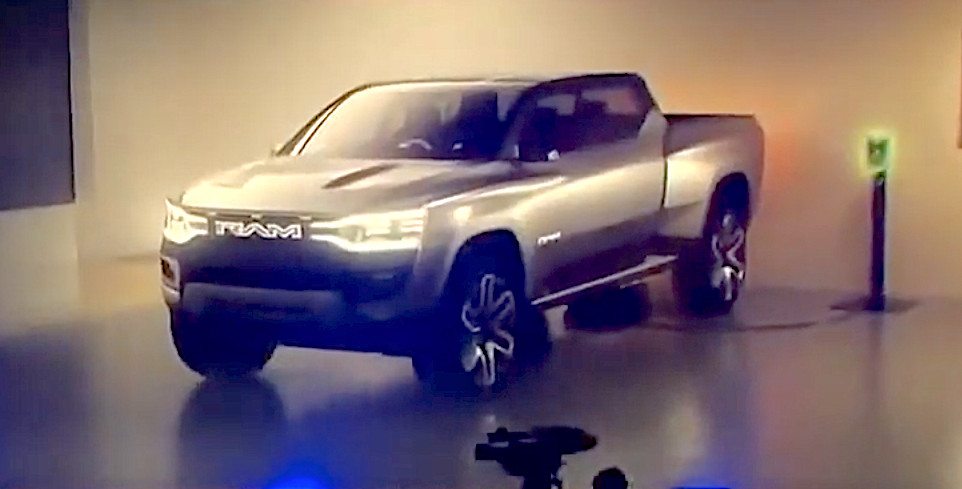
Ram Revolution EV concept with inductive charger
That could be what Ram is betting on, especially with the additional confirmation that a range-extended Ram EV is on the way
As of yet, no U.S. models offer factory wireless charging setups. However, the Genesis GV60 offers factory integration in its home-market South Korea, and the tech has been adopted in some Chinese-market EVs from Hongqi and IM Motors, and in the Alibaba-backed Zhiji L7.
In the U.S., BMW has tested the tech with its 5-Series plug-in hybrid in a small pilot program, and there are various aftermarket setups that allow owners to upfit a vehicle for it—at a cost of a few thousand dollars.
Ford has developed an automated charging system with researchers in Germany, pointing to potential future use by robotaxi fleets, although that system employs a robotic arm that would need to be ready for vehicles and charge ports of varying heights. The Chinese firm AIWays has shown a robotic concierge named CARL that can be summoned by an app to deliver a charge.
There's also Tesla’s snake charger, which bends and wriggles its way from near floor level up to the charge port and plugs in. It hasn't evolved past the concept stage, and at the time it was teased, back in 2015, CEO Elon Musk said that it was “for realz.” To date, it is not "realz."



